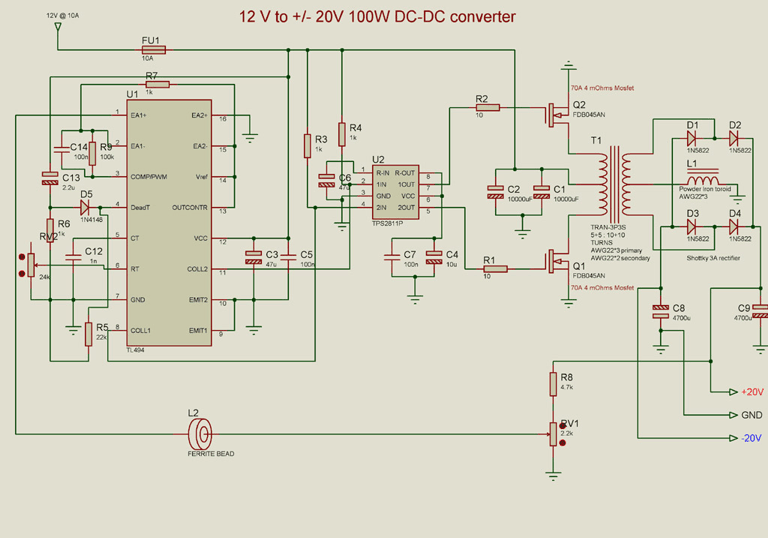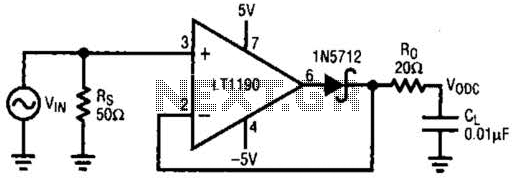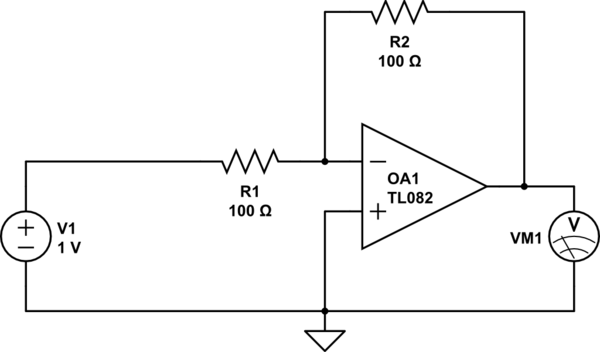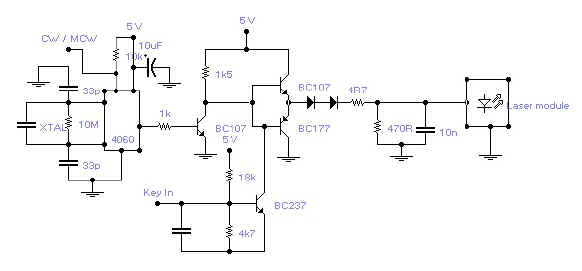
Inverted 555 Timer Circuit
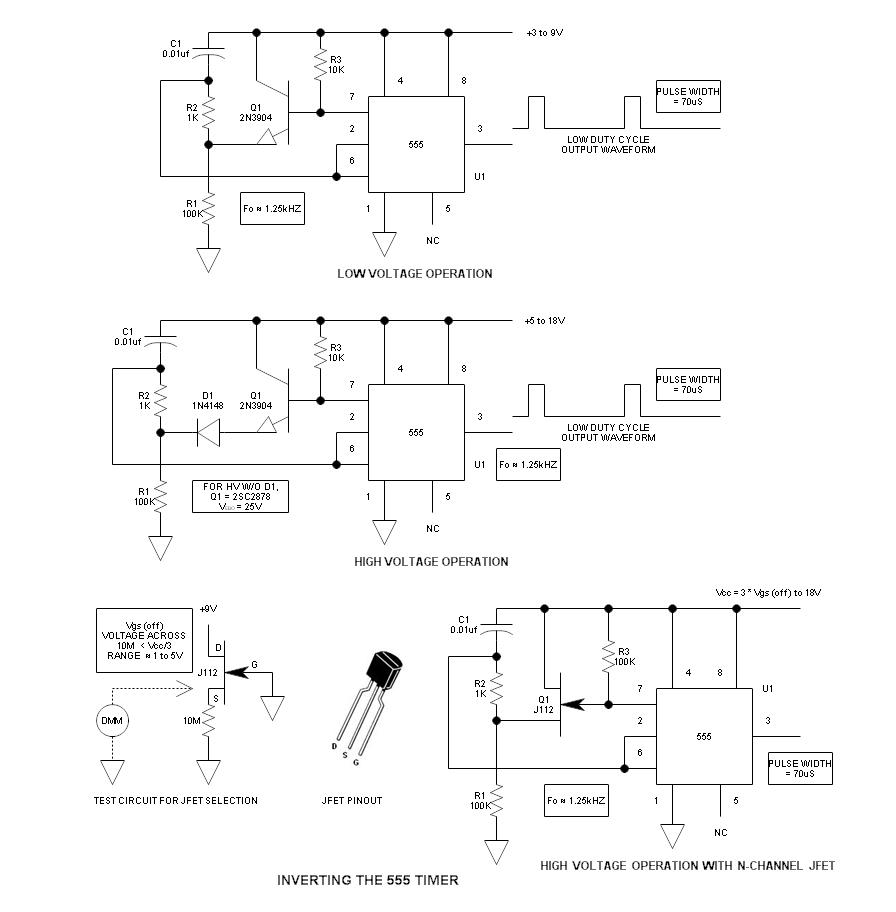
When using the 555 timer, the output polarity often appears to be incorrect, as the 555 typically cannot produce a duty cycle of less than 50%. This inverted 555 circuit is capable of generating duty cycles below 50%. The functionality remains similar, but the output polarity differs. A common question arises: why not simply invert the output with a transistor? The answer is that a transistor intended for inversion does not provide the desirable totem pole source/sink output function of pin 3. Furthermore, this configuration is part of a 555 VCO circuit that necessitates the inverted timer. The first circuit employs a standard 2N3904 transistor, which operates effectively when Vcc is less than 9V. However, when Vcc exceeds 9V, the base-emitter junction begins to zener, disrupting performance. The base-emitter junction zeners slightly above -6V. The second circuit incorporates a diode (D1) at the emitter of Q1 to increase the VEBO, allowing Vcc to rise to a maximum of 18V. Alternatively, D1 can be omitted by using the specialized 2SC2878 switching transistor, which has a VBEO rating of -25V. Although these transistors are no longer in production, they can be found on platforms like eBay and are recommended for serious experimenters' collections. Current production alternatives are typically housed in small SO-23 SMD packages. The third circuit utilizes a J112 N-Channel JFET for Q1. The JFET is a unique device that functions well in this application, provided the VGS(OFF) parameter is accounted for; VGS must be less than Vcc/3 (e.g., if Vcc = 9V, VGS(OFF) must be under 3V for proper operation). Given the variability in the VGS(OFF) parameter (-1 to -5V), careful selection of the device is necessary. A simple test circuit is provided, and most devices will perform adequately. The J112 should also be part of every serious experimenter's component collection. It is noteworthy that C1 is connected to Vcc instead of ground, and R1 and R2 charge it in the negative direction. This configuration ensures that the relatively high discharge current does not flow through the power source. The reset transistor (Q1) discharges the capacitor positively. Resistors R1 and R2 are selected similarly to those in a standard 555 timer, while R3 serves as a pull-up resistor for the open collector output (pin 7), enabling it to drive the emitter follower (or source follower) reset transistor.
The inverted 555 timer circuit is designed to overcome the limitations of the standard 555 timer, particularly regarding duty cycle and output polarity. In typical applications, the 555 timer can only achieve duty cycles equal to or greater than 50%, which restricts its versatility in various timing applications. The inverted configuration allows for duty cycles less than 50%, thus expanding the timer's functionality.
The use of the 2N3904 transistor in the first circuit illustrates a common approach for low-voltage applications. However, as the supply voltage (Vcc) increases beyond 9V, the base-emitter junction's zener effect becomes a critical consideration. This behavior can lead to operational instability, necessitating modifications such as the addition of D1 in the second circuit to increase the VEBO rating, thereby extending the operational voltage range. The recommendation to utilize the 2SC2878 transistor is particularly valuable for applications requiring higher voltage tolerances, although sourcing this component may be challenging due to its discontinued status.
The inclusion of the J112 N-Channel JFET in the third circuit presents an alternative that leverages the unique characteristics of FETs, particularly their high input impedance and low output capacitance. The requirement for VGS(OFF) to be less than Vcc/3 introduces an additional design consideration, emphasizing the importance of selecting appropriate components to ensure reliable operation.
In summary, this inverted 555 timer circuit provides a robust solution for generating lower duty cycles while maintaining the functionality of the traditional 555 timer. The careful selection of components, alongside thoughtful circuit design, enables this circuit to operate effectively across a range of supply voltages and applications.Whenever I use the 555 timer, it seems that the output polarity is invariably incorrect, and the way the 555 functions, it normally cannot generate a duty cycle of less than 50% ” 90% yes, 10% NO! This inverted 555 circuit generates duty cycles of less than 50%. Everything works the same except for the polarity. Why not simply invert the outputwith a transistor Will not that do the same Legitimate question Actually NO, because a transistor that inverts the output cannot provide the desirable totem pole source/sink output function of pin 3. And there is another reason that we will get in the future ”this is a 555VCO circuit that requires the inverted timer.
The first simply uses a normal 2N3904 garden variety transistor, and this works well when Vcc < 9V. When Vcc > 9V, the base to emitter junction starts to zener and disrupts operation. Transistor base to emitter junction zeners a little above -6V. The second circuit adds D1 to the emitter of Q1 in order to increase VEBO. With this mod, Vcc may be increased to the 18V limit. However, D1 may be eliminated if we use the special 2SC2878 switching transistor that has a VBEO rating of -25V.
These devices are no longer in production, but are available on eBay ”every serious experimenter should have a few in his component collection. The types now in production use the tiny SO-23 SMD package. The third circuit uses a J112 N-Channel JFET for Q1. The JFET is a curious device that works well for the application provided we allow for the VGS(OFF) parameter.
VGS must be less than Vcc /3. (e. g. if Vcc = 9V, VGS(OFF) must be less than 9V /3 or 3V for proper operation). Since the VGS(OFF) parameter is sloppy (-1 to -5V), the device must be selected ”to the left is a simple test circuit ”actually, most devices will work OK. The J112 should also be in every serious experimenter`s component collection. You will note that C1 is tied to Vcc rather than common and that R1 & R2 charge it in the negative direction.
By connecting C1 to Vcc, the relatively high discharge current does not run through the power source. The reset transistor (Q1) discharges the capacitor in the positive direction. R1 & R2 are determined in the same fashion as the normal 555 timer. R3 is a pull-up resistor for the open collector output (pin 7) so it can drive the emitter follower (or source follower) reset transistor.
🔗 External reference
The inverted 555 timer circuit is designed to overcome the limitations of the standard 555 timer, particularly regarding duty cycle and output polarity. In typical applications, the 555 timer can only achieve duty cycles equal to or greater than 50%, which restricts its versatility in various timing applications. The inverted configuration allows for duty cycles less than 50%, thus expanding the timer's functionality.
The use of the 2N3904 transistor in the first circuit illustrates a common approach for low-voltage applications. However, as the supply voltage (Vcc) increases beyond 9V, the base-emitter junction's zener effect becomes a critical consideration. This behavior can lead to operational instability, necessitating modifications such as the addition of D1 in the second circuit to increase the VEBO rating, thereby extending the operational voltage range. The recommendation to utilize the 2SC2878 transistor is particularly valuable for applications requiring higher voltage tolerances, although sourcing this component may be challenging due to its discontinued status.
The inclusion of the J112 N-Channel JFET in the third circuit presents an alternative that leverages the unique characteristics of FETs, particularly their high input impedance and low output capacitance. The requirement for VGS(OFF) to be less than Vcc/3 introduces an additional design consideration, emphasizing the importance of selecting appropriate components to ensure reliable operation.
In summary, this inverted 555 timer circuit provides a robust solution for generating lower duty cycles while maintaining the functionality of the traditional 555 timer. The careful selection of components, alongside thoughtful circuit design, enables this circuit to operate effectively across a range of supply voltages and applications.Whenever I use the 555 timer, it seems that the output polarity is invariably incorrect, and the way the 555 functions, it normally cannot generate a duty cycle of less than 50% ” 90% yes, 10% NO! This inverted 555 circuit generates duty cycles of less than 50%. Everything works the same except for the polarity. Why not simply invert the outputwith a transistor Will not that do the same Legitimate question Actually NO, because a transistor that inverts the output cannot provide the desirable totem pole source/sink output function of pin 3. And there is another reason that we will get in the future ”this is a 555VCO circuit that requires the inverted timer.
The first simply uses a normal 2N3904 garden variety transistor, and this works well when Vcc < 9V. When Vcc > 9V, the base to emitter junction starts to zener and disrupts operation. Transistor base to emitter junction zeners a little above -6V. The second circuit adds D1 to the emitter of Q1 in order to increase VEBO. With this mod, Vcc may be increased to the 18V limit. However, D1 may be eliminated if we use the special 2SC2878 switching transistor that has a VBEO rating of -25V.
These devices are no longer in production, but are available on eBay ”every serious experimenter should have a few in his component collection. The types now in production use the tiny SO-23 SMD package. The third circuit uses a J112 N-Channel JFET for Q1. The JFET is a curious device that works well for the application provided we allow for the VGS(OFF) parameter.
VGS must be less than Vcc /3. (e. g. if Vcc = 9V, VGS(OFF) must be less than 9V /3 or 3V for proper operation). Since the VGS(OFF) parameter is sloppy (-1 to -5V), the device must be selected ”to the left is a simple test circuit ”actually, most devices will work OK. The J112 should also be in every serious experimenter`s component collection. You will note that C1 is tied to Vcc rather than common and that R1 & R2 charge it in the negative direction.
By connecting C1 to Vcc, the relatively high discharge current does not run through the power source. The reset transistor (Q1) discharges the capacitor in the positive direction. R1 & R2 are determined in the same fashion as the normal 555 timer. R3 is a pull-up resistor for the open collector output (pin 7) so it can drive the emitter follower (or source follower) reset transistor.
🔗 External reference
